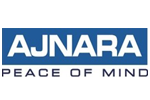A DVR (Don’t worry I will get to these later) connected to a specifically designed CCTV camera that records all the time, often used on residential and commercial premises. This is the most common form of CCTV system which you can find at https://sites.google.com/site/smartits/homeAn example of the most complex
CCTV system would be
A dedicated server that stores constant recordings everyday day of the year and receives video material from
IP cameras (again, I will mention these later) that can be located across different countries and even continents. These systems are often controlled by a company that will monitor them all year round to report anything out of the ordinary.
What is a DVR?
OK let’s start from the beginning; DVR is an abbreviation for “Digital Video Recorder”. DVRs can come in different styles, types and capabilities but all constitute the same basic operation.
They all offer a standalone alternative from the older VCR Recording CCTV solutions, which is to record without being attended. DVRs can record constantly, up on motion detection or even on a scheduled basis.
A combination of these three can create a real powerful CCTV setup! Inside the DVR there is a hard drive (much like inside a computer and often the same kind) which all the recordings are saved to from the cameras.
DVRs accept a video and audio input with a graphical user interface for the user to change settings on the DVR and personalise for their particular needs.
This makes up a basic DVR some with more capabilities than others. To see our range of CCTV DVRs please refer to http://www.uksecurityshop.com/
DVRs are often named “CCTV Multiplexers” as they perform multiple tasks at the same time. These tasks on a basic model are to Record, Playback and Backup at the same time.
DVRs come with different capabilities one of the main capabilities to look out for are the amount of channels that the DVR takes.
Each channel represents a camera on the DVR, so, if the DVR says Four Channel on the box, this means it can take up to four cameras.
You can have less than four cameras but no more. Some examples of different channel capabilities are listed below;
Four Channel DVR – Can take up to four cameras
Eight Channel DVR – Can take up to eight cameras
Sixteen Channel DVR – Can take up to sixteen cameras
Thirty Two Channel DVR – Can take up to thirty two cameras
Compression, applies to each DVR. The most modern and popular form of compression is H.264, this is video format that the DVR records to in effort to save space and record longer onto the hard drive.
Older DVRs support MJPEG and MPEG recording compression which has a huge size difference. For example;
A DVR with MJPEG/MPEG recording on a 500GB hard drive may record for around 3 ½ days on a constant recording basis.
A H.264 DVR recording on a 500GB hard drive may record for around 12-14 days on a constant recording basis.
As you can see there is a substantial difference! Recording length varies up on the quality of the CCTV cameras, quality of the recording and even what is your recording.
Recording Qualities
Quality & Frame Rates
Quality
When recording CCTV images there are a couple of different qualities and variations. We will briefly cover this now and make it a little easier to understand. Let us start with the recording qualities;
There are three main types of recording quality as listed below;
1.D1 (Highest)
2.Half D1 (Medium)
3.CIF (Low)
Also Known As
1.4CIF (Highest)
2.2CIF (Medium)
3.CIF (Low)
1.Frame (Highest)
2.Field (Medium)
3.CIF (Low)
D1 (4CIF & Frame)
This is the most widely recognised quality abbreviation where CCTV is concerned. D1 is the highest DVR recording quality available. Setting your CCTV cameras to this setting will increase detail, resolution and sharpness.
Half D1 (2CIF & Field)
This settings has different references among different CCTV DVRs, I would recommend double checking the DVRs manual to see which way they refer to this setting.
(Usually using one of terms above) This setting is half the quality of D1, so if D1 is the highest picture quality, then Half D1 is half the quality and sharpness, yet, is the most widely used, I shall explain why later on.
CIFThis is the lowest quality setting available for recording your
CCTV cameras. It records at a lesser quality than Half D1. (This quality is ideal for mobile internet streaming as it has a quicker response time but I’ll get more into that later).
Frame Rates
The frame rate regulates the speed at which the footage is recorded, for example 25 FPS (Frames per second) is classed as Real Time recording which means that it records in a speed equal to literal time and movement.
This means that 25 frames are shot every second and recorded giving a really clean picture.
This can be reduced to 12FPS and 6FPS with some CCTV DVRs even allowing you to choose any number between 1 and 25. Remember, the lower the frame rate, the more space you will have left on your Hard Drive.
Most modern DVRs allow you to record a certain quality at a certain frame rate, see below;
1.D1 (4CIF & Frame) Can be recorded at 6FPS (6 Frames shot a second)
2.Half D1 (2CIF & Field) Can be recorded at 12FPS (12 Frames shot a second)
3.CIF Can be recorded at 25FPS (25 Frames shot a second) **Real Time**
The above rules apply to all reasonably priced DVRs, but check your DVR manual for more information or contact the manufacturer of the DVR.
As you can see from the information above the quality of the recording regulates the frame rate. This happens because the DVR has a limited processing power that has to be balanced between the quality and frame rate. High quality with a lower frame rate will give an even balance as will the other combinations.
You can change the DVRs recording quality and frame rate for each individual CCTV camera, for example; you could have a CCTV camera running at D1 at 6FPS and another camera running at Half D1 at 12FPS this is really useful if you have different cameras with different qualities.
Some DVRs may also allow you to change the frame rate to different standards depending on the quality. See below;
This is an example for a four channel DVR;
Channel 1 – D1 at 25FPS
Channel 2 – CIF at 6FPS
Channel 3 – CIF at 6FPS
Channel 4 –CIF at 6FPS
As you can see above, because the lower quality and lower frame rate combined then allows the highest quality to run at a better frame rate. Remember each model of DVR has different specifications check your manual, the DVR itself or contact the manufacturer to see if this function is supported.
More expensive DVRs designed for business properties may give you 25FPS at D1 across all channels. Again double check this against the manual or manufacturer. Please refer to http://www.uksecurityshop.com/
Sometimes, resellers use different terms for the frame rate for example; a reseller could be selling a four channel DVR that is capable of 100FPS. This can be a little misleading as that is a really high frame rate. If you see a really high frame rate, divide it among the amount of channels that the DVR has, like so;
100FPS Divided by Four (as the DVR has four channels) equals 25FPS. This means each channel can support up to 25FPS to each channel. Remember UP TO 25FPS! This does not mean it will support 25FPS at D1 unless specified.
Now we know what a DVR “Digital Video Recorder” is.
Let’s move on to cameras
What is a CCTV camera?
A CCTV camera again has been generalised and has many different varieties and specifications, so let’s start with the basics.
A CCTV camera has to be connected to either a recording or viewing device in order to be recognised as a CCTV camera.
Here’s an example of a basic CCTV camera
A small indoor basic camera with low resolution that connects to a cable that is attached to a television, although it does not record it is still recognised as a CCTV camera.
An example of the most common CCTV camera would be the following;
A camera specifically designed to be used as a CCTV camera with a 3.6mm lens and a Sony 1/3 sensor which is then put inside either a dome, bullet or eyeball style casing often having night vision capabilities for night time operation. This is then attached to a DVR or viewing device in order to oversee its viewing area. Here there is probably a lot of terms that you’re not familiar with, I will list a quick jargon buster at the end of this section so that you can see what each term represents.
An example of a complex CCTV camera would be the following
A camera specifically designed for CCTV operation that works in accordance with the IP Camera category. Meaning it can be accessed and be set to record without aDVR and remotely accessed from anywhere with an internet connection. This camera may also have a large housing with a heater and de-mister inside and a 22~54mm lens and a 750TVL chipset. This would be an extremely powerful camera designed for long range and rugged conditions as well as being able to be accessed remotely without a DVR.
Jargon Buster
CCTV – Closed Circuit Television, a term for general television recording and viewing in accordance with safety and security.
DVR – Digital Video Recorder, a standalone recorder for video and audio images.
H.264 Compression – The latest compression for video material. It takes the original video recording file size and reduces it significantly without losing any quality what so ever of the video material itself allowing longer periods of time to be recorded at once.
Sensor Size 1/3 etc – This is the size of the video sensor inside; it is located behind the lens of the CCTV camera to take in all the details of its viewing, remember the larger the sensor, the larger angle you will receive.
Lens – The lens sits on the end of the CCTV camera sensor to focus the viewing angle. The smaller the millimetre, the wide the angle will be, this works in conjunction with the sensor size. Smaller millimetre and larger sensor means bigger width of viewing angle. E.g sensor 1/3 with a 3.6mm lens will output an 80 degree angle.
Vari Focal Lens – This works the same way as a normal lens but has an alterable lens so you can adjust the zoom and focus of lens to suit its environment, for example 2.8mm~12mm lens can be adjusted to any degree of width between 92~27 degrees.
Camera Chassis (Case) – The type of casing that surrounds the chipset and internals of the CCTV camera, they can be made from various materials including; plastic, metal and gun metal.
Chipset – refers to the chipset inside the camera which is made by many different manufacturers such as Sony, Sharp, Panasonic, Samsung and AVTECH.
Night Vision – Night vision is conjured of two main methods. The most common is Infra Red night vision. The infra red LEDs sit around the lens of the CCTV cameraand project rays that only the camera can see which illuminates the environment that it is aimed at. However, the more LEDs that are present the better range and clarity you will achieve. The other method is Digital Low Light night vision, which does not require any additional LEDs. It digitally reviews the environment and creates a lightened image. It is considered to be more helpful than Infra Red as it isn’t limited in terms of range.
BNC – The CCTV standard for video connections. At the end of your CCTV cabling (that is used for the cameras) you have a BNC connector which is basically made up of coaxial cable and a unique twist and click end. The BNC ends are much better than the usual RCA, phono and coaxial connectors as they are much more secured, the BNC cables are mostly used analogue systems and cameras.
IP Rating – An IP rating is the classification which relates to cameras that are used in an outdoor environment. For example, if a CCTV camera is IP55 rated, it can be used outside in casual weather without a problem, if an item is IP66 rated it means that the camera is a lot more durable and able to last longer in harsher weathers.
IP Cameras – abbreviated from “Internet Protocol Enabled Cameras” this means that the camera can be connected directly to the internet and viewed remotely over the internet without the need of a DVR. The camera would connect directly to your router which you can then set up for remote viewing through a computer or smart phone and even recorded to a different location than the camera itself is located.
Remote Access – Accessing CCTV equipment over the internet, for example; Accessing a DVR with the IP address, accessing an IP camera or even accessing IP cameras and DVRs from a smart phone. This is subject to an internet connection and the correct setup.
Port forwarding – Opening ports on your router to allow incoming and outgoing data. For example; you want to access your DVR from work, but it won’t let you. You need to open the relevant port (s) for the DVR.





















